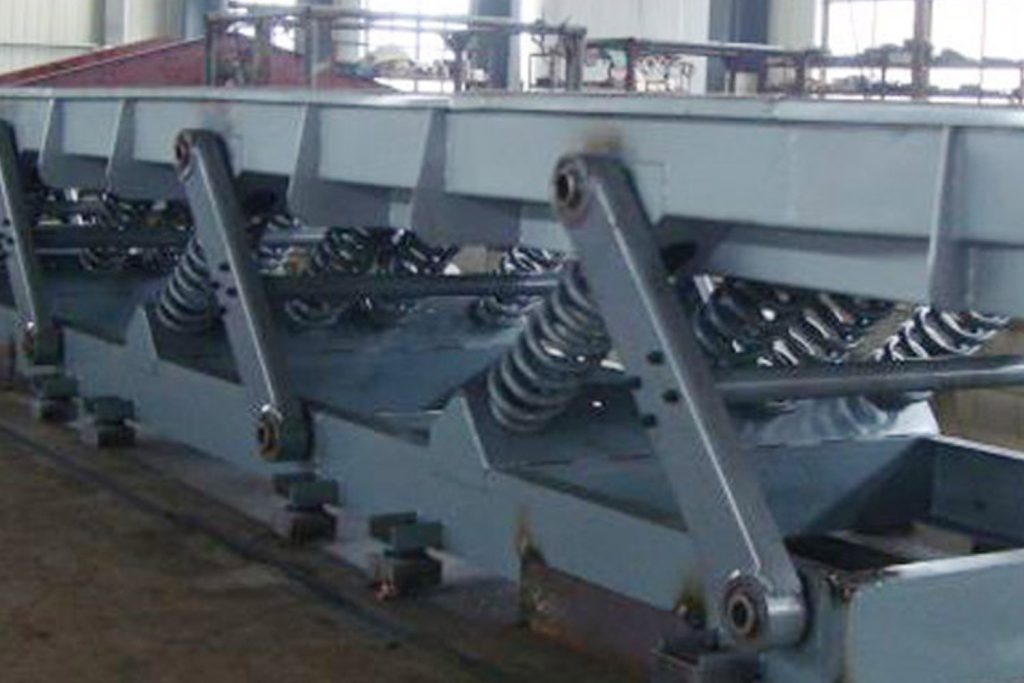Vibration conveying is a widely used technique for the transportation of bulk solids in various industries, including pharmaceuticals, food processing, and chemical industries. Vibration conveying is a process that relies on the principles of vibration to move particles along a conveyor. While vibration conveying can be an efficient and gentle method of conveying particles, it can also result in particle segregation. In this article, we will explore the process of vibration conveying as well as the challenges of particle segregation and how to mitigate its effects.
Vibration Conveying in Material Handling
Vibration conveying is a process of moving particles by the principle of vibration. In a vibrating conveyor, a trough or tube is mounted on springs that vibrate with an oscillating motion, causing particles to move along the conveyor towards a discharge point. Vibration conveying is an efficient method of conveying bulk solids as it can transport large quantities of material with little energy consumption.
However, the vibration motion of the conveyor tray the system can cause the segregation of particles by different characteristics such as size, shape, and density. This can lead to issues such as inaccurate dosing, out-of-spec products, and poor material flow. Therefore, understanding particle segregation is essential to efficient material handling.
Particle Segregation in Vibration Conveying
Particle segregation is the separation of particles based on their characteristics, such as size or density. In vibration conveying, segregation can occur due to differences in particle size, shape, or density. This phenomenon happens when the conveying velocity and vibration frequency are not appropriately adjusted to take into account the size and characteristics of the particles being conveyed.
For example, small particles may migrate to the bottom and the large particles to the top, leading to the creation of two layers. Another example is the change in particle concentration along the conveying direction, which affects the product quality in batch processes. Segregation may also alter particle distribution and compromise the performance of the end product.
Methods to Mitigate Particle Segregation
There are several methods to mitigate particle segregation during vibration conveying. The most effective method is to choose the right conveyor design and vibration parameters for the given material. This involves considering the material characteristics, such as particle size, shape, and density, and ensuring that the conveying velocity and amplitude are appropriate for the material being conveyed. In some cases, it may be necessary to adjust the vibration frequency or tray angle to reduce segregation.
Another solution is the implementation of a baffle or specialised discharge chute. These devices help keep particle motion in the centre of the conveyor and minimise segregation. The level of segregation can also be reduced by adding other materials to the mixture, increasing the powder flow resistance and influencing the flow pattern of the mixture.
Benefits of Vibration Conveying

Despite the challenges of particle segregation, vibration conveying remains a popular method of conveying bulk solids due to its many benefits. Some of these benefits include:
- Gentle Product Handling
One of the most significant advantages of vibration conveying is the gentle handling of products. Vibratory conveyors exert minimal force on products, which reduces the risk of damage to fragile products. Vibratory conveyors are often used in industries where preserving product integrity is critical. - Low Noise Generation
Vibratory conveyors are typically quieter than other forms of conveying. As they rely on oscillating motion rather than physical contact to transport material, there is less noise generated when transporting products. Vibratory conveyors are an excellent choice for busy facilities with strict noise requirements. - Flexible Design
Vibratory conveyors are easy to customise and can be designed to suit specific production needs. Vibratory conveyors can be made in various sizes and shapes to accommodate the type and amount of product being transported. They can also be designed to fit into existing production lines or standalone operations.
Final Words
Vibration conveying is a well-established method of moving bulk materials in various industries. Despite the challenges posed by particle segregation, vibration conveying offers many benefits, including gentle product handling, low noise generation, and flexible design. By choosing the right conveyor design and vibration parameters and mitigating particle segregation effects, you can enjoy these benefits and achieve efficient and effective material handling.
If you’re interested in learning more about vibration conveying and particle segregation or the information mentioned in this article, here are some useful references to help you:
- Yildiz, H. M. (2014). Vibration conveyors for bulk material handling and processing. Advanced Powder Technology, 25(2), 333-342: https://www.sciencedirect.com/science/article/pii/S0921883113000468
- Cui, J., Dong, K. J., & Zhao, Y. (2019). A new view on segregation in granular flow. Chemical Engineering Science, 196, 142-149: https://www.sciencedirect.com/science/article/pii/S0009250918309013
- Steel, R., & Morgan, N. (2019). Vibratory Conveyors for Bulk Solids. Centre for Bulk Solids and Particulate Technologies: https://bulkhandling.org.au/bhcma/wp-content/uploads/sites/2/2019/02/03-Vibratory-Conveyors-for-Bulk-Solids.pdf
- Jiang, M. J., & Liu, C. Y. (2020). Particle segregation in a horizontal vibration conveyor with a U-shape trough. Powder Technology, 359, 163-170: https://www.sciencedirect.com/science/article/pii/S0032591020301332
I hope these references are helpful to you in learning more about vibration conveying and particle segregation.